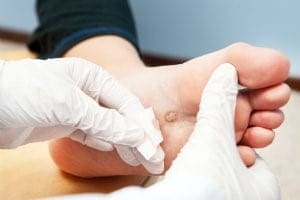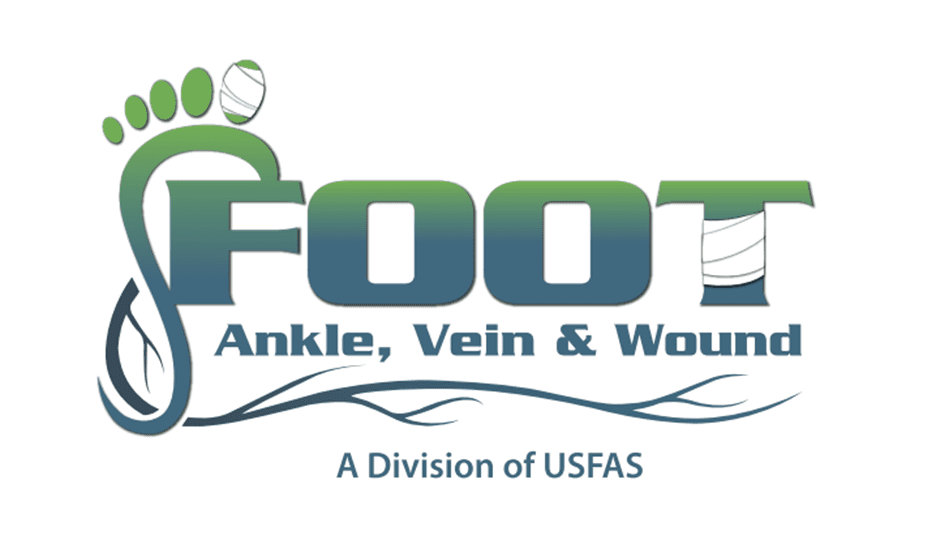
Although they’re relatively benign in a medical sense, warts can be extremely embarrassing for both adults and children. These grainy, small, abnormal skin growths are usually harmless, but if they’re located in a sensitive spot, they could also cause pain and tenderness when pressed.
That’s often the case with plantar warts, which emerge on the soles of feet. These tend to be long and flat, and may appear grayish or brownish with a pinpoint of black at the center.
Causes and Risk Factors
Warts are cause by a viral infection, specifically of the human papillomavirus, or HPV. The virus typically enters through breaks in the skin, including cuts or scratches too small for you to even see. Warts are contagious and can spread to other locations on your hand and foot, or to others people through contact. You could even get them from contact with an infected surface—the virus thrives in warm and moist environments; for example towels, bathroom floors, pool decks, or inside a pair of shoes.
Kids are especially likely to contact warts, due to both increased rate of contact with infected surfaces (e.g., barefoot play with other kids, sports, etc.) and the fact that their immune systems are not yet fully developed. However, warts can show up on anyone of any age.
Is Home Care Effective?
You may have heard a number of tales or suggestions about home remedies for warts, such as the “duct tape” method, and of course a number of over-the-counter wart removal products are available from drug stores and other retailers.
However, before you consider any home care treatment, we strongly encourage you to get a medical opinion first. Although your problem may look like a wart, there’s a chance that the diagnosis is incorrect. It could even be something much more dangerous, like a melanoma.
In general, we find most home care methods like duct tape are ineffective at best, and potentially even harmful if you don’t have the correct diagnosis first. Over-the-counter wart removal kits that you can get at a pharmacy tend to do a little better, although their record of treatment success is still mixed. They should, however, be safe to try (provided you’ve obtained a professional diagnosis first). If it works for you, great! If not, book an appointment.
Wart Removal
At Foot & Ankle Clinic of the Virginias, we offer a variety of treatment options to remove stubborn, embarrassing, and painful warts. These include:
- Debridement and medication. This is typically the initial approach in most situations. First, we’ll carefully file down the dead skin—don’t worry, this procedure is completely painless. Then, we’ll apply a medication and write you a prescription so you can continue to treat it at home. It usually takes more than one session to completely eradicate the warts, so you might have to return every couple of weeks for a little while for more debridement.
- HyperBlue Laser treatment. If debridement isn’t working, we can use this state-of-the-art, multi-purpose laser system, which uses a 30W, 980nm laser beam as an effective, FDA-approved tool for wart removal. Local anesthetic is required, but there shouldn’t be much if any discomfort.
- Manual incision. In severe cases, we can simply cut the wart out and remove it manually in a sterile hospital environment. Generally this is only used in severe cases. You should never, ever attempt to perform “bathroom surgery” and cut a wart out yourself—the risk of infection is too high. Let us do it for you safely.
Of course, warts do not need to be treated if you are healthy and they aren’t bothering you or causing pain. Often they will disappear on their own, although it may take months or years to do so.
Wart Prevention
There’s no way to perfectly guarantee prevention. However, practicing good hygiene, protecting your feet and avoiding unnecessary exposure to potentially infected surfaces can greatly reduce your risk of warts developing, multiplying, or spreading.
- Don’t pick at your own warts. This can cause them to spread. Try to avoid contact, and wash your hands anytime you do touch them.
- Don’t share nail clippers or emery boards with others who may have warts.
- Wash feet regularly—at least once per day.
- Change shoes and socks daily, or more often if you sweat a lot.
- Don’t go barefoot in public. Protect your feet at least with shower shoes or flip flops in public facilities.
If warts are bothering you or causing you pain, contact Foot & Ankle Clinic of the Virginias and let our team of experts help you remove them safely. To set up an appointment at whichever of our many locations is most convenient for you, give us a call at (800) 456-8637.

